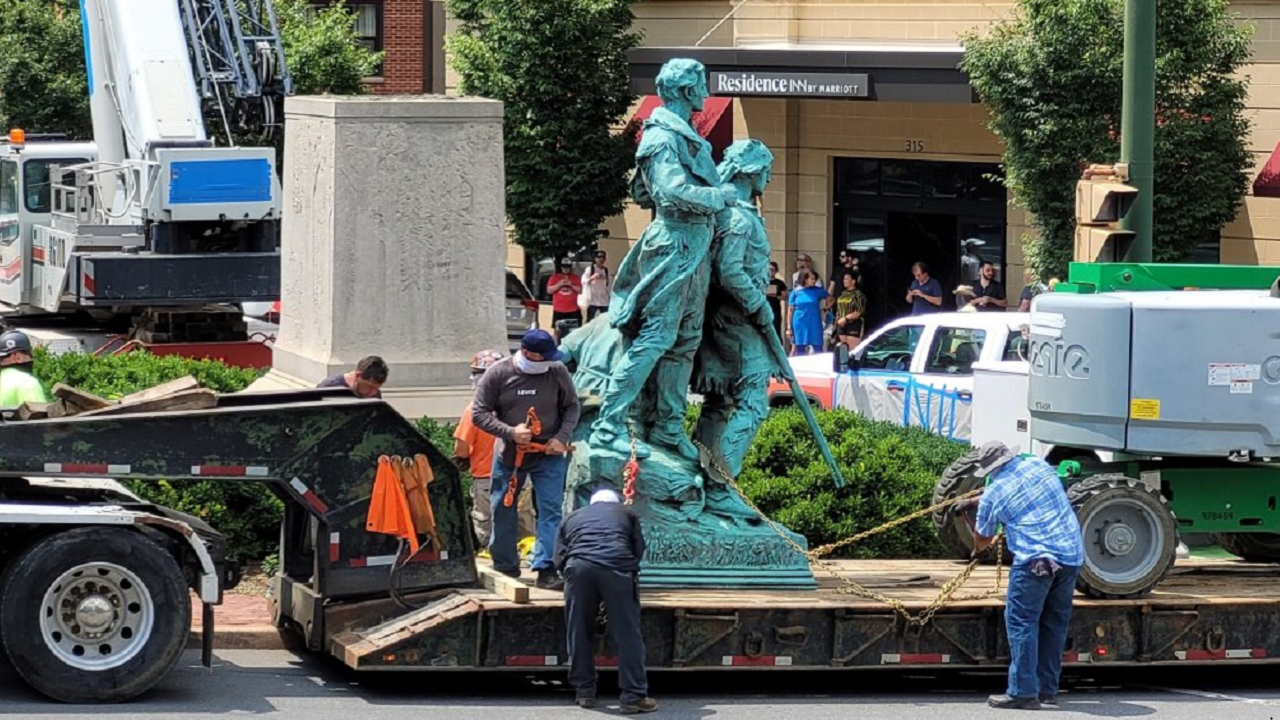Lesh
Diamond Member
- Dec 21, 2016
- 83,028
- 41,545
- 2,615
Most of these monuments were put up by the United Daughters of he Confederacy
According to lawyer Greg Huffman, writing in Facing South, "[p]erhaps nothing illuminates the UDC's true nature more than its relationship with the Ku Klux Klan. Many commentators have said the UDC simply supported the Klan. That is not true. The UDC during Jim Crow venerated the Klan and elevated it to a nearly mythical status. It dealt in and preserved Klan artifacts and symbology. It even served as a sort of public relations agency for the terrorist group."[6] At its 1913 annual national convention, the UDC unanimously endorsed The Ku Klux Klan, or The Invisible Empire,[54] a book written by UDC historian Laura Martin Rose, then president of the UDC's Mississippi Division, which alleged that the Klan had rescued the South from carpetbagger-inspired racial violence.[55] Published near the height of the UDC's Confederate statue-installation and textbook-vetting efforts, the book became a supplementary reader for Southern school children.[56][57] A local chapter of the UDC funded a now-vanished[6] memorial to the Klan erected in 1926 near Concord, North Carolina.[58] As late as 1936, the UDC's official publication featured an article which lauded the role of the Ku Klux Klan.[59]
According to lawyer Greg Huffman, writing in Facing South, "[p]erhaps nothing illuminates the UDC's true nature more than its relationship with the Ku Klux Klan. Many commentators have said the UDC simply supported the Klan. That is not true. The UDC during Jim Crow venerated the Klan and elevated it to a nearly mythical status. It dealt in and preserved Klan artifacts and symbology. It even served as a sort of public relations agency for the terrorist group."[6] At its 1913 annual national convention, the UDC unanimously endorsed The Ku Klux Klan, or The Invisible Empire,[54] a book written by UDC historian Laura Martin Rose, then president of the UDC's Mississippi Division, which alleged that the Klan had rescued the South from carpetbagger-inspired racial violence.[55] Published near the height of the UDC's Confederate statue-installation and textbook-vetting efforts, the book became a supplementary reader for Southern school children.[56][57] A local chapter of the UDC funded a now-vanished[6] memorial to the Klan erected in 1926 near Concord, North Carolina.[58] As late as 1936, the UDC's official publication featured an article which lauded the role of the Ku Klux Klan.[59]

 Nice try...but people were still alive from those wars when the statues were erected. The majority of confederate statues were put up during the Jim Crow 20s and the civil rights movement in the 60s.
Nice try...but people were still alive from those wars when the statues were erected. The majority of confederate statues were put up during the Jim Crow 20s and the civil rights movement in the 60s.
